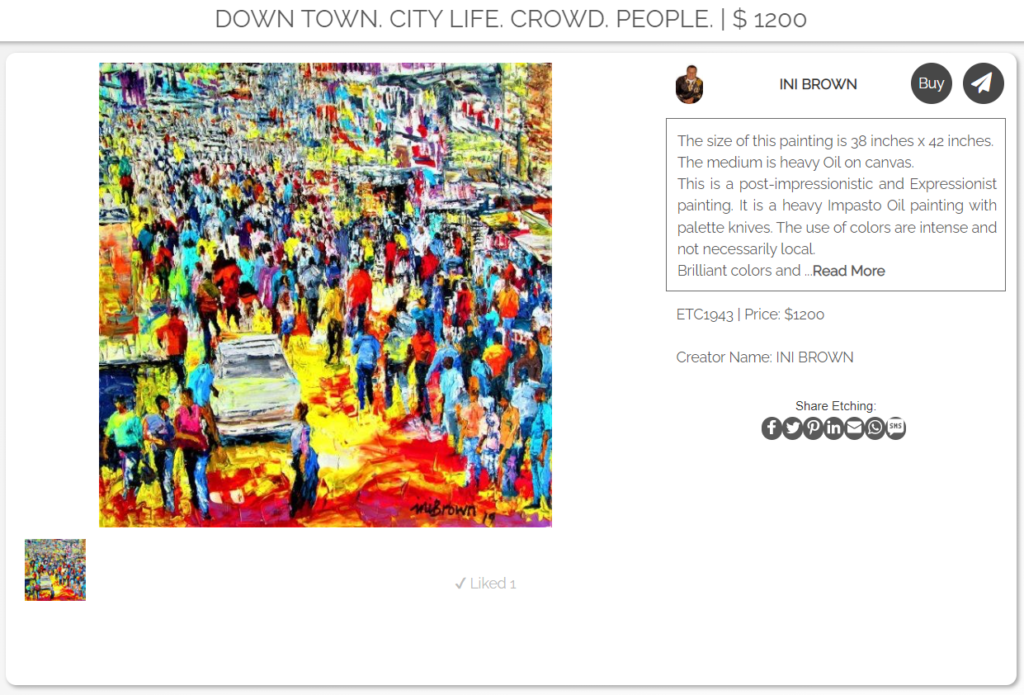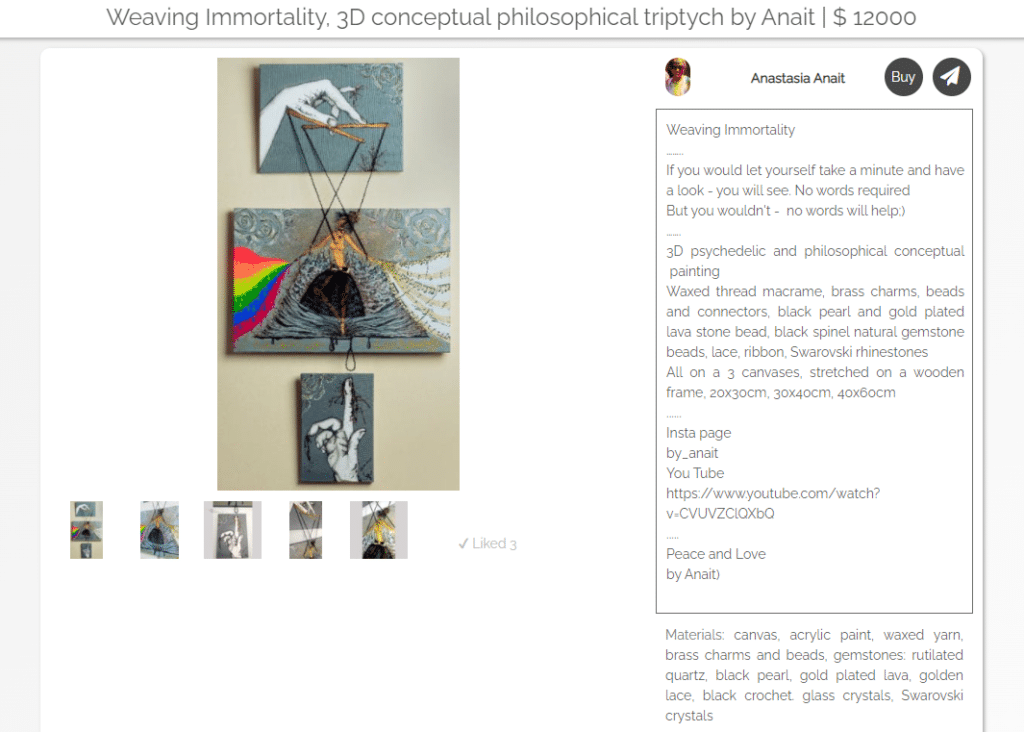How to Tell the Story of a Work of Art
The story of a work of art drives both its sentimental and monetary values.
For both artists and art collectors, capturing that story on the Etching is critical for future enjoyment and success. Future owners will want to have it.
While the story of a piece of art doesn’t necessarily have to follow any particular outline, there are some components that you’ll want to capture, whether you are the creator etching the object or a collector etching an object purchased prior to the existence of ETChster.
Who?
The most critical piece of the story of a work of art is establishing who created it. For pieces created by deceased artists, documentation of the provenance of the piece is critical as the artist can no longer simply verify they created the piece.
If you’re interested in how much value can be created/restored to a piece by getting it properly attributed to the artist, consider the recent documentary: The Lost Leonardo. You’ll learn the story of the Salvator Mundi as well as get a better appreciation of how valuing high-end art works.
For ETChster creator users, etching your work from your profile establishes who created it, and you’re able to provide proof that you are the creator for future purchasers by transferring the etching to your buyer at the time of sale.
For art collectors, you’ll want to discuss the creator of the piece and how you came to acquire it. Depending on your needs, you may wish to use either the description field of the internal notes. If you know the artist is living, sending them a story request is a great way to have them digitally verify that they are indeed the creator of the piece.
What?
You can think about the “what” of a work of art in two parts.

- Physical aspects: Size & materials used. If it’s a painting, whether or not it is framed, for example. If someone were to buy it, what is included?
- Content: What is depicted in the work of art. Here you can really dive in to develop a story about the piece.
When?
As the creator, you’ll simply want to put a date for the completion of the work.
As a collector, you may not know an exact date for completion of the work, so instead, you should try to document when the piece became known to the public, its first public display or sale, for example.
What Was the Inspiration?
For artists who may not be that well known publically yet, your story is not really out there to be discovered easily. Take some time to share what inspired this piece with your audience. You’ll want to use the Description field for this.
How Does It Fit in Context with Others Works by the Same Artist?
As artists build renown, their periods or series of works become documented. The scarcity of a piece of work influences its value along with its connection to other pieces in a particularly popular series. You’ll find a discussion of how certain Warhol pieces were worth more than others because of their series in Don Thompson’s The $12 Million Stuff Shark, The Curious Economics of Contemporary Art.
As the creator, letting your audience know that this piece is “1 of 4” in a series called you’ve named is worth doing.
As an art collector, you’ll want to establish which series the piece belongs to. To learn how to do this, you should review our Art Collector’s Guide.
How Does It Fit in Context with Current Events, Historical Events, or Artistic Movements?
If you’ve documented the inspiration for a work of art, you may have already at least partially covered this topic. Whether more of a locally-known movement or part of an internationally famous one such as French Impressionism, providing some external context to your etchings is valuable.
For artists getting started, this may be as simple as referencing any contemporaries with whom you’re involved in your city.
If you’re exploring or creating a new technique, referring to that makes sense.
Can I See Some Examples of Telling the Story of a Work of Art?
Absolutely. You’ll find great storytelling among the ETChster community. Take a look around the community at artists such as Ini Brown, Anastasia Anait and others.
Where Do I Capture the Stories of Works of Art?
At ETChster, we call the digital records that hold the story of a work of art, prove ownership, and allow for the public listing of works for sale “Etchings.” They hold descriptions, internal notes, process statements, and more useful tools.
Anyone can create up to 100 Etchings for free. We do require power users to pay a small monthly subscription that helps us maintain the community and keep enhancing the tools offered. Our Pro packages include many tools useful to both art collectors and artists.



